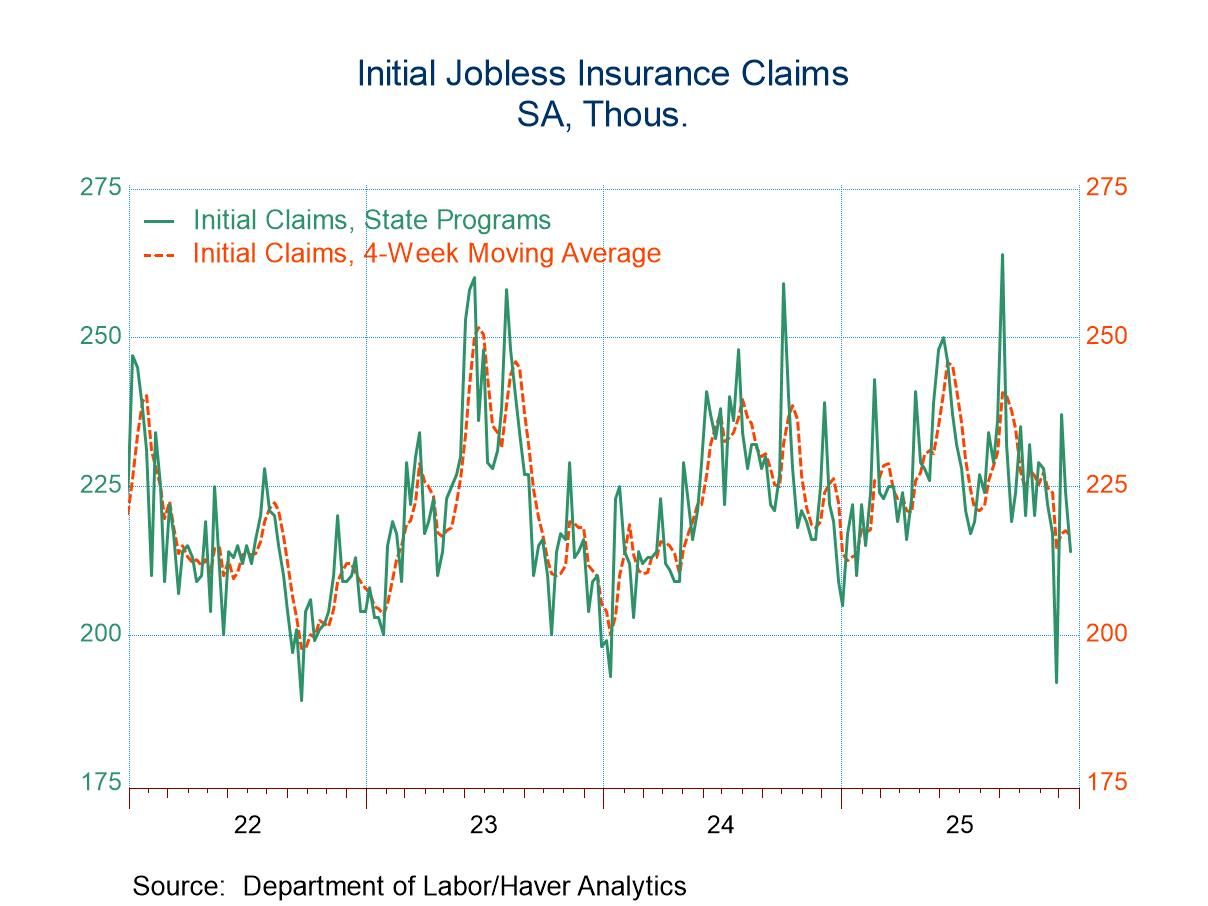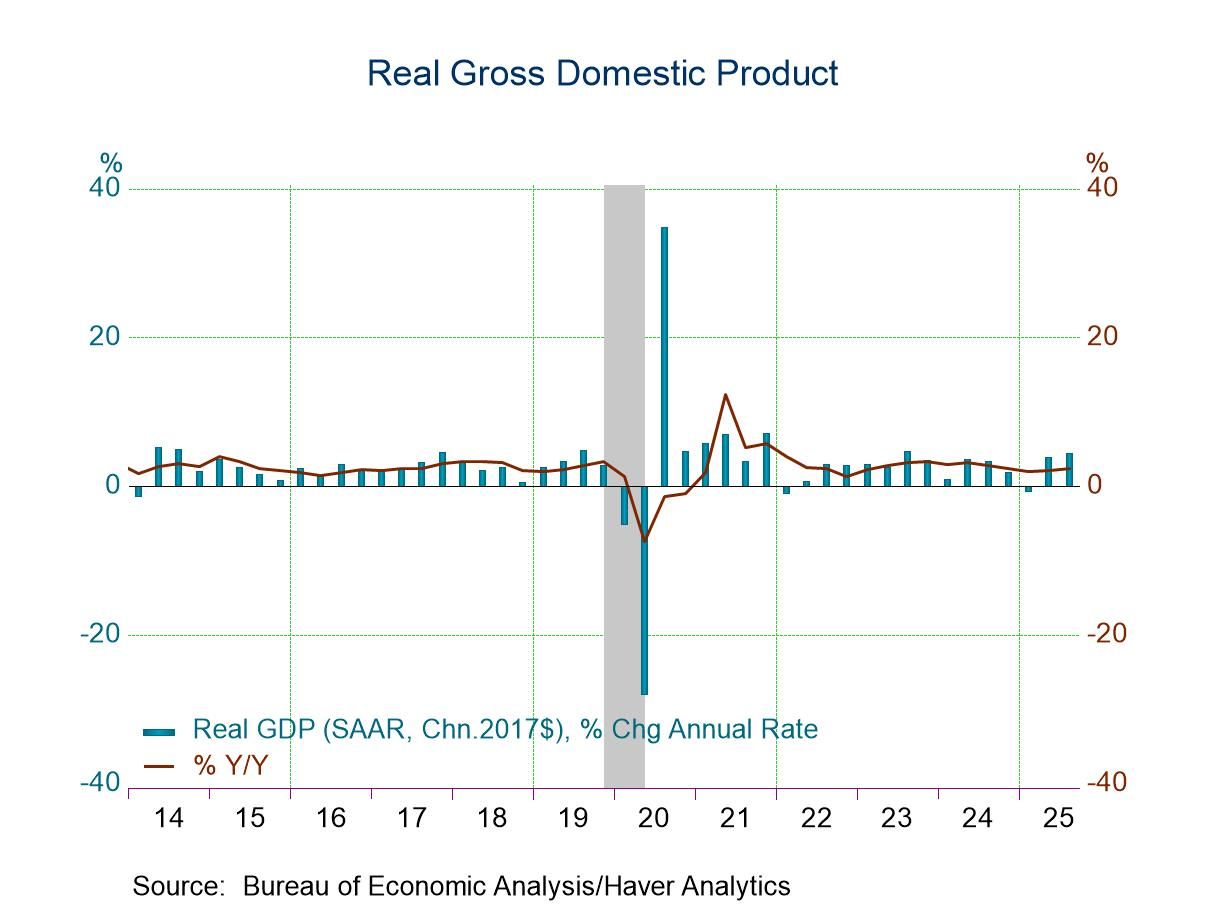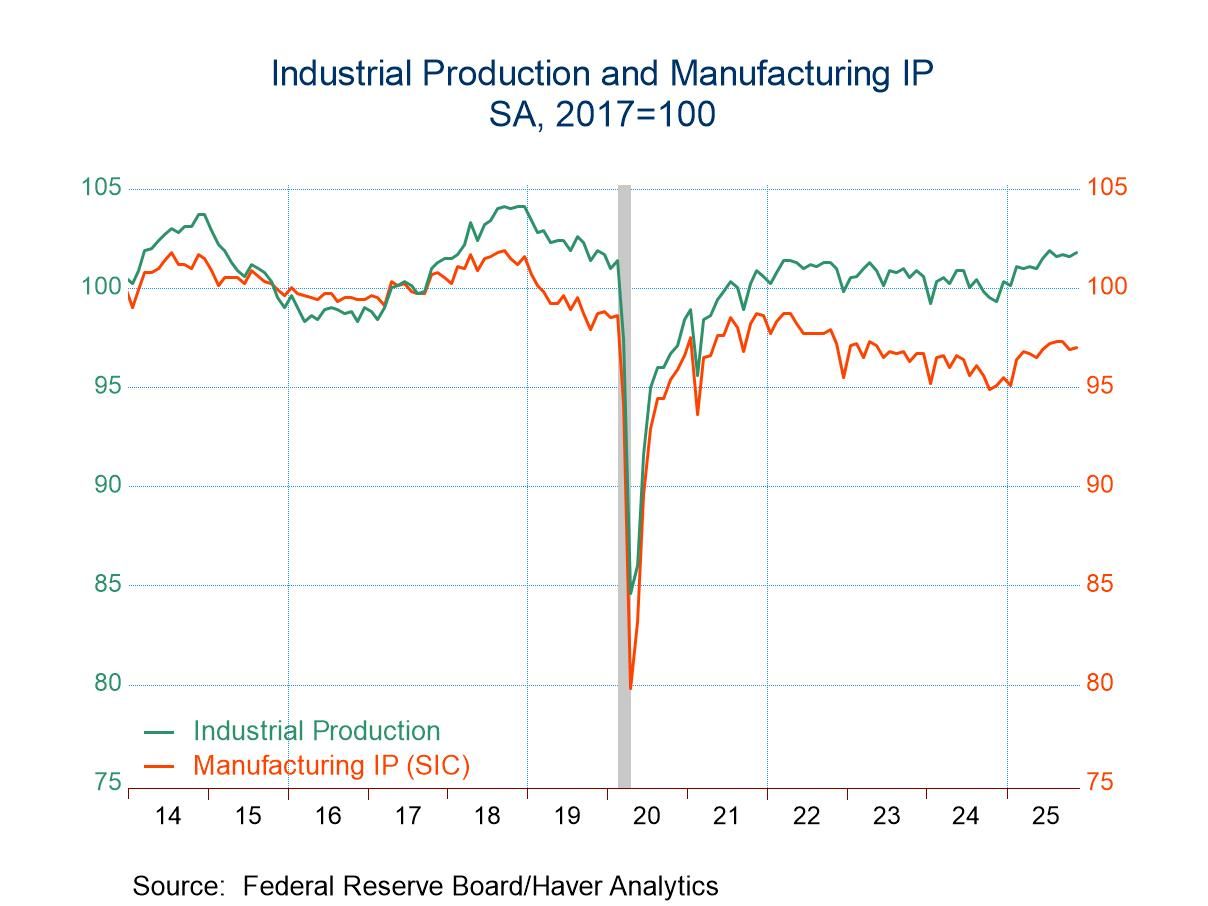 Global| Jun 16 2018
Global| Jun 16 2018Empire State Manufacturing Index Continues to Strengthen
by:Tom Moeller
|in:Economy in Brief
Summary
The Empire State Manufacturing Index of General Business Conditions rose to 25.0 during June, the highest level in eight months. Expectations had been for 18.0 in the Action Economics Forecast Survey. These data, reported by the [...]
The Empire State Manufacturing Index of General Business Conditions rose to 25.0 during June, the highest level in eight months. Expectations had been for 18.0 in the Action Economics Forecast Survey. These data, reported by the Federal Reserve Bank of New York, reflect business conditions in New York, northern New Jersey and southern Connecticut.
Haver Analytics calculates a seasonally adjusted index that is comparable to the ISM series. The calculated figure increased to 58.2, the highest level since March 2006. During the last ten years, the index has had a 69% correlation with the quarter-on-quarter change in real GDP.
Most of the components of the Empire State Survey improved this month. The new orders index rose to 21.3, the highest level since November. The shipments index similarly displayed strength with its rise to 23.5, the highest figure in six months. The unfilled orders measure also rose, but the delivery times series eased to 13.2 and indicated the quickest delivery speeds since February. The inventory index fell to a four-month low of 5.4.
The number of employees reading strengthened to 19.0, a six-month high. During the last ten years, there has been a 77% correlation between the employment index and the month-on-month change in factory sector payrolls. While 24% of respondents reported a higher payroll level, 5% reported a lower hiring level. Working the other way, the employee workweek reading rose to 12.0, and was well above the recent low of 0.8 in January.
The prices paid index slipped to 52.7, but remained up sharply from its October 2015 low of 0.9. Fifty-four percent of respondents indicated increased prices, while just two percent reported a decline. The prices received index improved to 23.3 and also was near the highest level since 2011.
The series measuring expectations of business conditions in six months strengthened to 38.9 but remained down versus its February high of 50.5. Most of the expectation series improved m/m, except the price measures and capital & technology spending readings.
The Empire State figures are diffusion indexes, which are calculated by subtracting the percent of respondents reporting declines from those reporting gains. The data are available in Haver's SURVEYS database. The ISM-adjusted headline index dates back to 2001. The Action Economics Forecasts can be found in Haver's AS1REPNA database.
U.S. Industrial Production Slips Unexpectedly
by Tom Moeller June 15, 2018
The Federal Reserve reported that industrial production eased 0.1% (+3.5% y/y) during May following a 0.9% April rise, revised from 0.7%. A 0.2% increase had been expected in the Action Economics Forecast Survey. Factory sector production declined 0.7% (+1.7% y/y) and reversed April's 0.6% gain, revised from 0.5%. Utility output strengthened 1.1% (4.0% y/y) after a 3.2% increase. Mining production improved 1.8% (12.5% y/y) following a 1.0% improvement.
The surprising decline in production partially reflected a 1.0% fall (+1.5% y/y) in consumer goods output which reversed the prior month's increase. Durable consumer goods production declined 3.0% (0.0% y/y) after a 0.8% fall. Automotive product output declined 5.5% (-1.5% y/y) following a 1.9% shortfall. Computer, video & related production improved 0.8% (4.7% y/y) after a 0.1% uptick. Appliance, furniture & carpeting production fell 1.2% (-1.5% y/y) and countered the prior month's 1.7% rise. Nondurable consumer goods production fell 0.4% (+1.9% y/y) following a 1.5% gain. Energy product output weakened 1.6% (-0.2% y/y) after a 3.7% increase. Apparel production declined 1.9% (0.0% y/y) after a 2.4% gain. Paper product output weakened 1.1% (-2.2% y/y) after a 0.8% increase. Food & tobacco production fell 0.3% (3.1% y/y) following a 1.1% improvement. Working the other way, chemical product production rose 0.5% (2.8% y/y) after a 0.4% gain.
Production of business equipment declined 1.1% last month (+1.0% y/y) and reversed April's 1.1% rise. Transit equipment production fell 3.5% (-2.9% y/y) following a 0.3% dip. Production of information processing equipment slipped 0.1% (+4.8% y/y) following four straight months of strong increase. Industrial equipment & other equipment production fell 0.4% (+1.4% y/y) after a 1.8% rise.
Construction supplies output notched 0.1% higher (3.6% y/y) after a 0.5% increase.
Production of materials improved 0.5% (5.5% y/y) after a 0.9% increase. Energy product materials output increased 2.0% (11.0% y/y) after two months of roughly 1.2% gain. Durable goods materials output fell 0.8% (+2.7% y/y) following a 0.5% rise and nondurable goods materials held steady (0.9% y/y) following a 0.9% gain.
In the special aggregate groupings, production of selected high-technology industries rose 0.2% (6.3% y/y) following a 1.8% jump. Nonenergy production excluding high-tech retreated 0.6% (+1.7% y/y) and reversed a 0.6% rise. Factory sector production excluding both high-tech and autos eased 0.2% (+1.9% y/y) after a 0.8% strengthening.
Capacity utilization eased to 77.9% from its three-year high of 78.1%. Factory sector capacity utilization declined to 75.3%, the lowest level since January. Manufacturing sector capacity increased 1.0% y/y.
Industrial production and capacity data are included in Haver's USECON database, with additional detail in the IP database. The expectations figure is in the AS1REPNA database.
| Industrial Production (SA, % Change) | May | Apr | Mar | May Y/Y | 2017 | 2016 | 2015 |
|---|---|---|---|---|---|---|---|
| Total Output | -0.1 | 0.9 | 0.5 | 3.5 | 1.6 | -2.0 | -1.0 |
| Manufacturing | -0.7 | 0.6 | -0.1 | 1.7 | 1.2 | -0.8 | 0.1 |
| Consumer Goods | -1.0 | 1.0 | 0.4 | 1.5 | 0.0 | 0.7 | 1.5 |
| Business Equipment | -1.1 | 1.1 | 0.1 | 1.0 | 3.2 | -5.3 | -2.0 |
| Construction Supplies | 0.1 | 0.5 | -1.0 | 3.6 | 2.5 | 0.9 | 0.6 |
| Materials | 0.5 | 0.9 | 0.8 | 5.5 | 2.0 | -3.0 | -1.5 |
| Utilities | 1.1 | 3.2 | 4.1 | 4.0 | -1.3 | -0.4 | -0.8 |
| Mining | 1.8 | 1.0 | 1.4 | 12.5 | 6.4 | -9.7 | -3.4 |
| Capacity Utilization (%) | 77.9 | 78.1 | 77.5 | 76.2 | 78.1 | 75.4 | 77.3 |
| Manufacturing | 75.3 | 75.9 | 75.5 | 74.8 | 74.8 | 74.6 | 75.8 |
Tom Moeller
AuthorMore in Author Profile »Prior to joining Haver Analytics in 2000, Mr. Moeller worked as the Economist at Chancellor Capital Management from 1985 to 1999. There, he developed comprehensive economic forecasts and interpreted economic data for equity and fixed income portfolio managers. Also at Chancellor, Mr. Moeller worked as an equity analyst and was responsible for researching and rating companies in the economically sensitive automobile and housing industries for investment in Chancellor’s equity portfolio. Prior to joining Chancellor, Mr. Moeller was an Economist at Citibank from 1979 to 1984. He also analyzed pricing behavior in the metals industry for the Council on Wage and Price Stability in Washington, D.C. In 1999, Mr. Moeller received the award for most accurate forecast from the Forecasters' Club of New York. From 1990 to 1992 he was President of the New York Association for Business Economists. Mr. Moeller earned an M.B.A. in Finance from Fordham University, where he graduated in 1987. He holds a Bachelor of Arts in Economics from George Washington University.






